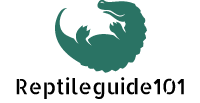Bearded dragon feeding could be considered one of the most important parts of owning a dragon.
Bearded dragons, in the wild, eat a wide variety of foods. They are considered true omnivores, because they’ll eat a variety of prey items such as crickets and also consume vegetation.
In captivity, providing a nutritional, varied diet is important. There are a lot of health issues, with bearded dragons, that can be prevented by providing proper nutrition.
While it might seem like it could get complicated when feeding your bearded dragon, it really isn’t. There are only so many things at our disposal to feed to our dragons. We have to do the best we can and become creative with providing the proper nutrition.
What’s on the Menu?
A bearded dragons diet can consist of four things, animal (prey such as crickets, mealworms, waxworms ), vegetation (such as leafy greens, fruits, flowers), supplements and commercial food (packaged bearded dragon food).
- Vegetables and Fruits
- Commercial Food
Feeding Your Dragon
Most dragon owners feed their dragons daily, as they are fairly active and have a high metabolism. This will change according to the age of your dragon.
| * These are just some bearded dragon feeding guidelines, and not written in stone. Always use good judgement in keeping your dragon well fed. |
Baby Dragons
Baby-bearded dragons (hatchlings) should be fed insects two to three times a day. They should eat a large number in each feeding, but every dragon is different. Feed them as much as they will eat within 10 minutes.
Also, insects should be dusted once daily with supplements. You can also offer vegetation daily, though your baby is going to eat mostly insects at this time.
Crickets should be the staple insect for hatchlings. It is very important that the crickets you feed are the right size. Crickets that are to big will still be eaten but can cause impactions and also paralysis.
The crickets should be one third the size of the hatchling’s head or smaller than the distance between their eyes. Mealworms are not recommended at this time, because of their hard chitinous shell.
Sub-Adults
Sub-adults diets are not as strict as the hatchlings. Once your dragon is about four months old or so you’ll feed them daily to twice a day. The prey size should still be smaller than the distance between their eyes.
They are growing rapidly, so you’ll want to give supplements from every day to every other day. Mealworms can now be introduced as a treat as well as wax worms and others. Vegetables can be offered daily as well.
Adult Dragons
Adult dragons should be fed daily to every other day. Though they are not growing rapidly, they are still active. There aren’t very many things now that are too big for your dragon to eat. Though, a good rule of thumb is to feed items smaller than the distance between your dragons eyes. Vegetables should also be offered daily.
As dragons get older they tend to eat more vegetation. This should be at least half of your dragons diet. One study showed that adult bearded dragons in the wild had a stomach content of 90 % vegetable matter.
All Ages
Thesee are some things that cross all three of these age groups.
- Feed enough prey items that will be consumed in about ten to fifteen minutes, or until they seem full.
- Never leave prey items in over night or for prolonged periods. If your dragon is full, the remaining crickets, if not provided anything else in the cage to eat, will start to nibble on your dragon.
- Also, never feed items that are too big, it is better to feed more smaller items than a few too big.
Following these bearded dragon feeding guidelines will help you keep a healthy and happy dragon.
Water for Your Dragon
When talking about bearded dragon feeding, you can’t leave out water. Water is just as vital to life as food is.
Bearded dragons have adapted to dry, arid habitats, and have learned to live with little water. It is good, however, to provide water daily for your dragon.
Keeping a water dish with fresh water in it every day is a good idea, though a dragon will rarely drink from it.
Most dragon owners will mist their pets with a spray bottle until they lap the water off of their heads. Some will mist rocks or other cage decorations and let their dragons drink the droplets, like simulating dew.
I like to use a child’s medicine dropper to give water. Although obscure, I used it to nurse a stressed out, dehydrated baby back to health. In doing so she seemed to get quite spoiled and wouldn’t have water given to her any other way after that.
Since then it’s been the best way for me to get water to my dragons. I just put a drop of water on the tip of their mouth and wait until they start to drink. Once they start to drink, I continue to give them more droplets until they are done drinking.
Most of the times my dragons won’t drink much, if anything at all. That’s alright though, just follow their lead. You don’t have to force them to drink, unless they are dehydrated. Bearded dragons receive water from the foods they eat.
In Closing
There might seem like there is a lot of information on bearded dragon feeding. Don’t be intimidated though, it’s not as hard as it may seem.
Once you learn, and start applying what you have learned, it will start to seem like second nature. If you always keep your pet’s welfare as top priority you will do fine.
As always, these are just some guidelines for bearded dragon feeding, there are other resources on this subject to be read. Do some research and see what others have to say, then choose what is best for you and your dragon.
